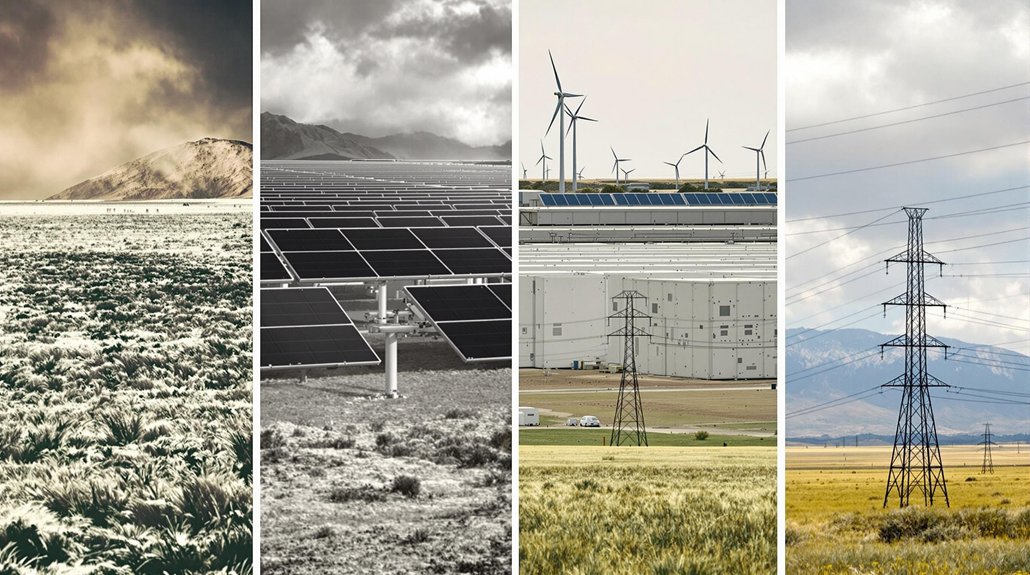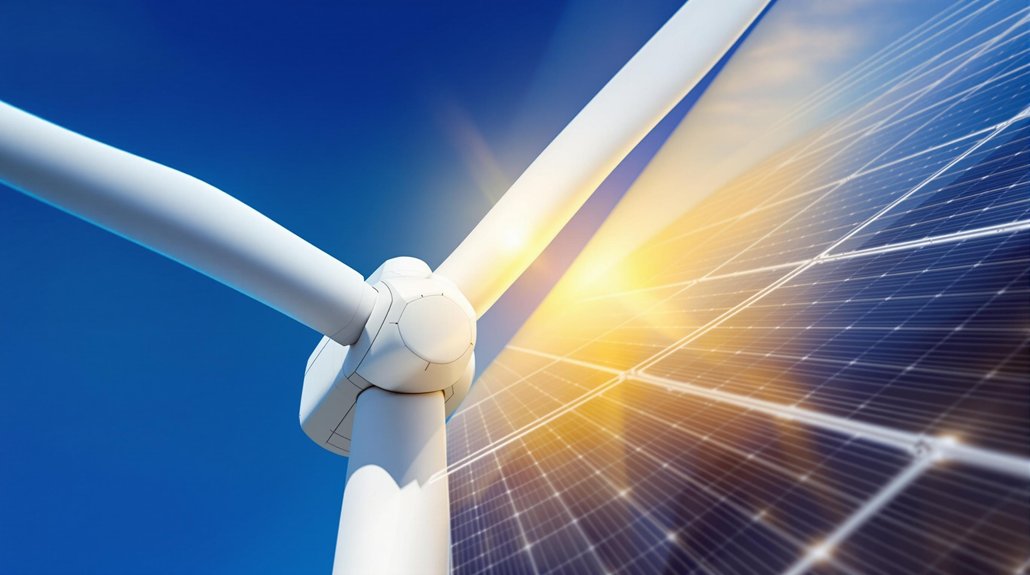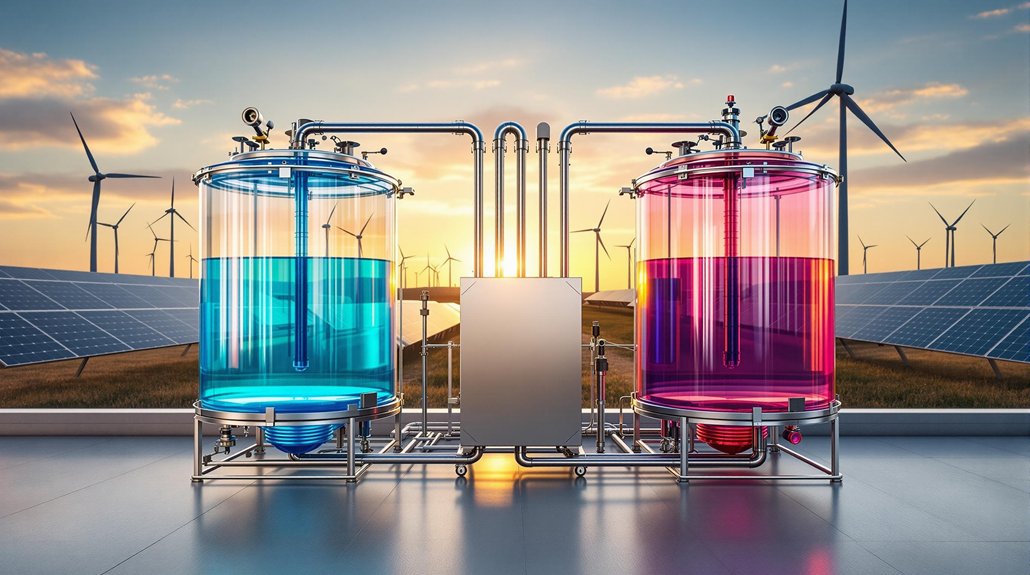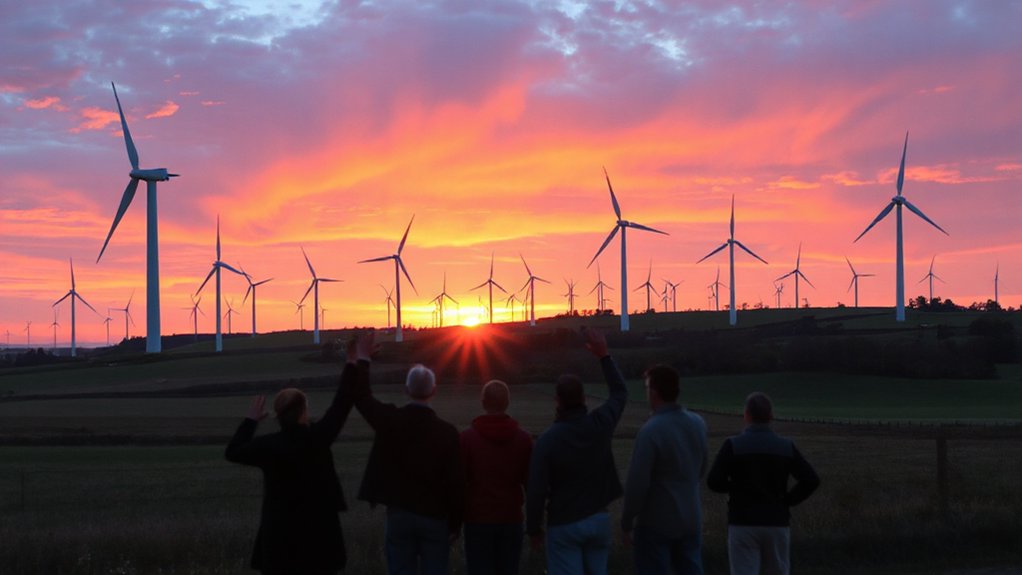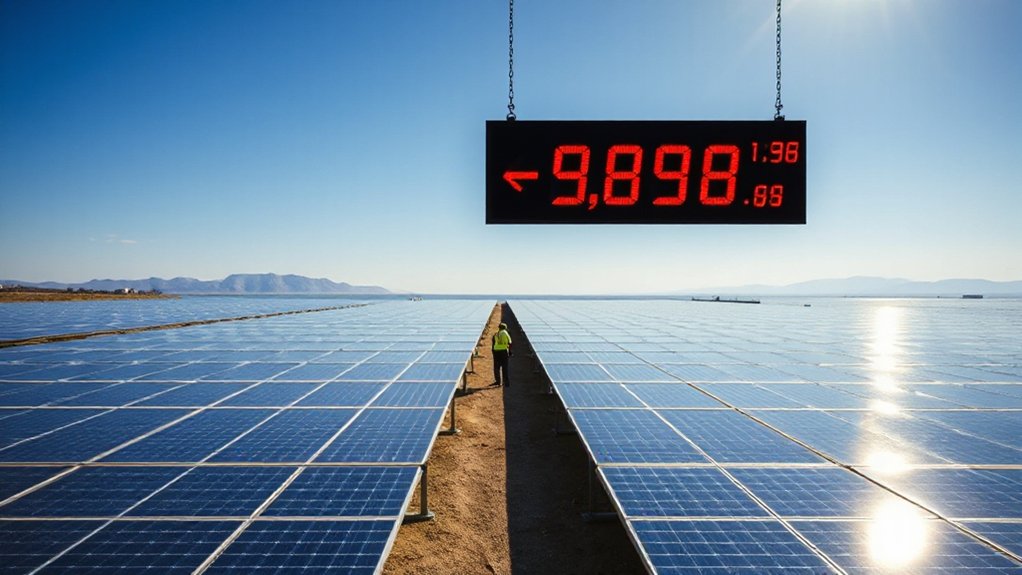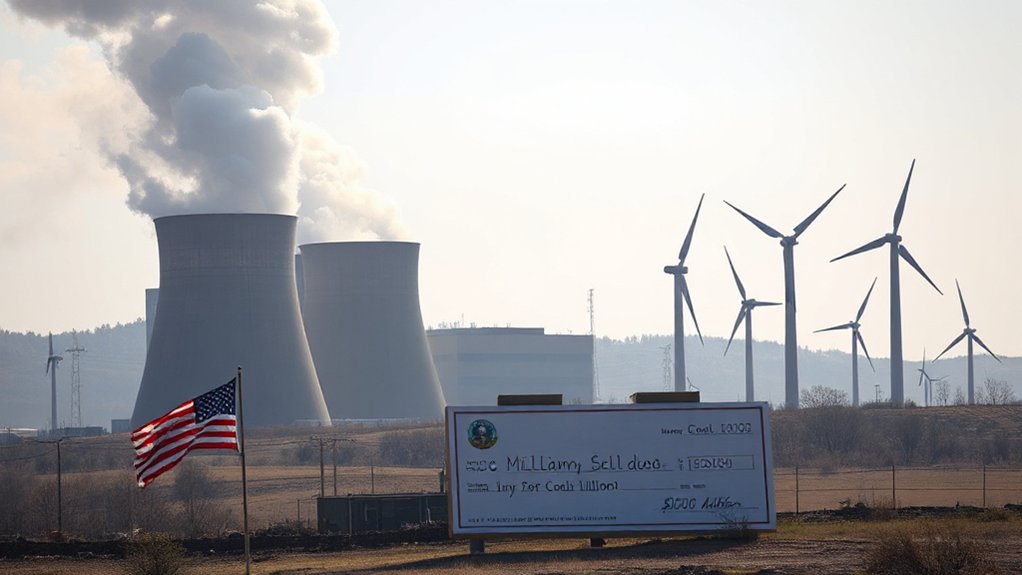Renewable energy sources share some frustrating drawbacks. They’re expensive to set up, unreliable when nature doesn’t cooperate, and terrible at storing power for later use. Solar panels become useless paperweights on cloudy days, while wind turbines stand like giant lawn ornaments when the breeze dies down. Geographic limitations force most renewable projects far from cities, requiring massive infrastructure changes. The deeper you dig into green energy challenges, the more complications surface.
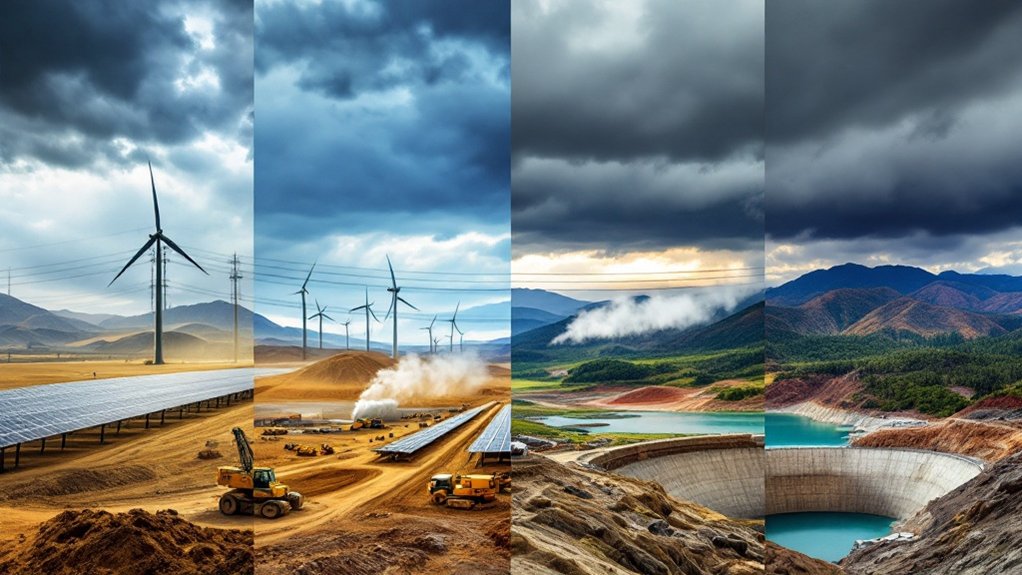
While renewable energy promises a cleaner future, its drawbacks are harder to stomach than a kale smoothie. The biggest gut punch? Money. These green technologies demand massive upfront investments that would make even a billionaire’s wallet feel lighter. We’re talking serious cash for equipment, infrastructure, and installations – all while fossil fuels smugly remind us how much cheaper they are. Installing just a basic solar system costs around solar panel systems.
Going green sounds lovely, but renewable energy’s price tag hits harder than a gut punch to your investment portfolio.
Mother Nature isn’t exactly the most reliable business partner, either. Solar panels become glorified roof decorations when clouds roll in, and wind turbines stand like giant lawn ornaments on calm days. This inconsistency means we’re stuck keeping fossil fuel plants on standby, like an ex we just can’t completely break up with. We only have about 50 years of oil left at current consumption rates, making this dependency even more concerning.
Storage solutions aren’t helping much. Current battery technology is about as sophisticated as a brick phone from the 90s – expensive, limited, and with its own environmental baggage. Try storing enough energy to power a city, and you’ll quickly realize why engineers are pulling their hair out.
Geography plays favorites, too. The sunniest spots are usually in deserts, and the windiest locations tend to be far from civilization. Even geothermal energy requires proximity to tectonic plate boundaries for optimal performance. Great. Now we need to build massive transmission lines across landscapes, which is about as popular with locals as a skunk at a garden party.
The environmental impact isn’t exactly negligible. Renewable projects gobble up land like teenagers at an all-you-can-eat buffet. Wildlife isn’t thrilled about sharing space with sprawling solar farms or whirring wind turbines. And let’s not forget about the mining required for components – not exactly earth-friendly.
The technical limitations are real, too. Renewable energy is like a smartphone with a weak battery – great when it works, but frustratingly inadequate compared to what we need. Our existing power grids weren’t designed for this on-again-off-again relationship with energy production.
Upgrading them is like trying to renovate a house while still living in it – complicated, expensive, and full of unexpected challenges.
